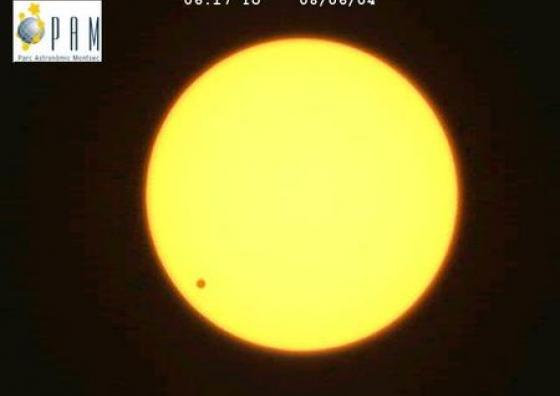On June 8, 2004, the first transit of Venus across the Sun since 1882 will occur. In spite of losing the scientific relevance they had in the past, the transits of Venus continue to be astronomical phenomena deserving our attention, most notably because of their exceptionality. Just to mention that there is no human being currently alive that has observed a transit of Venus!!
Given the geometry of the orbits of the Earth and Venus, a transit of the latter across the Sun is accompanied by a second one 8 years later. Thus, on June 6, 2012, we will have a new opportunity (the last one until 2117) of seeing Venus projected on the disc of the Sun. On this occasion, though, the transit will not be visible from Spain.
Visibility
The transit will be visible in all Eurome, Asia and Africa. And partially visible in Oceania and east America.
The next image shows the places you can see the transit in the world.
The total duration of the transit will be slightly above 6 hours.
The figure shows the position of Venus during the transit at intervals of 30 minutes. The North direction corresponds to the celestial North. Geocentric contacts are referred to an observer situated at the centre of the Earth.
Contact I: transit starts. The planet’s disc is externally tangent to the solar disc
Contact II: the planet’s disc is internally tangent to the solar disc
Maximum approach: the center of the planet crosses the Sun at a minimum distance from its center
Contact III: the planet’s disc is again internally tangent to the solar disc, this time at the opposite side of the solar limb
Contact IV: transit ends. The planet’s disc is externally tangent to the solar disc


